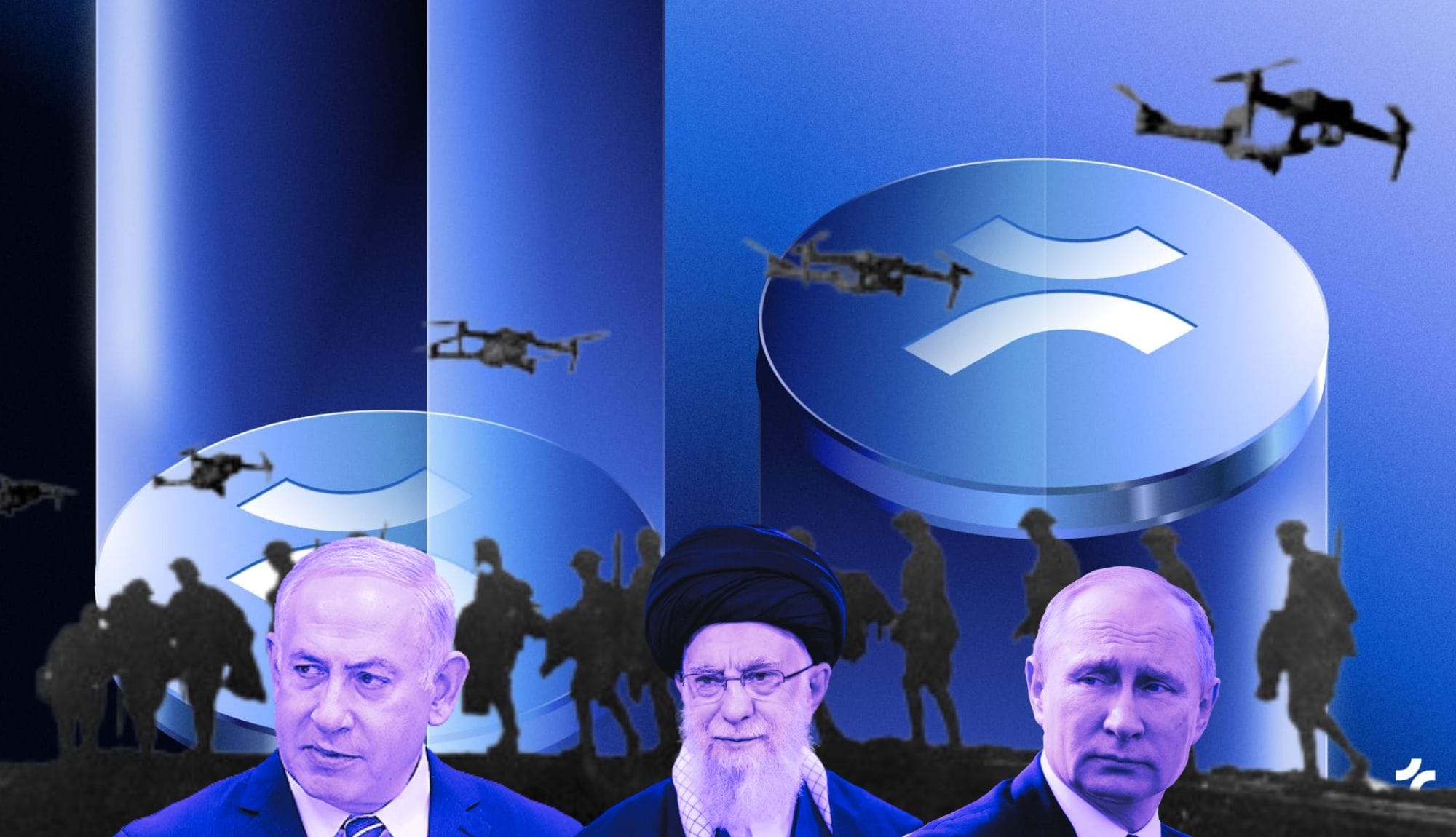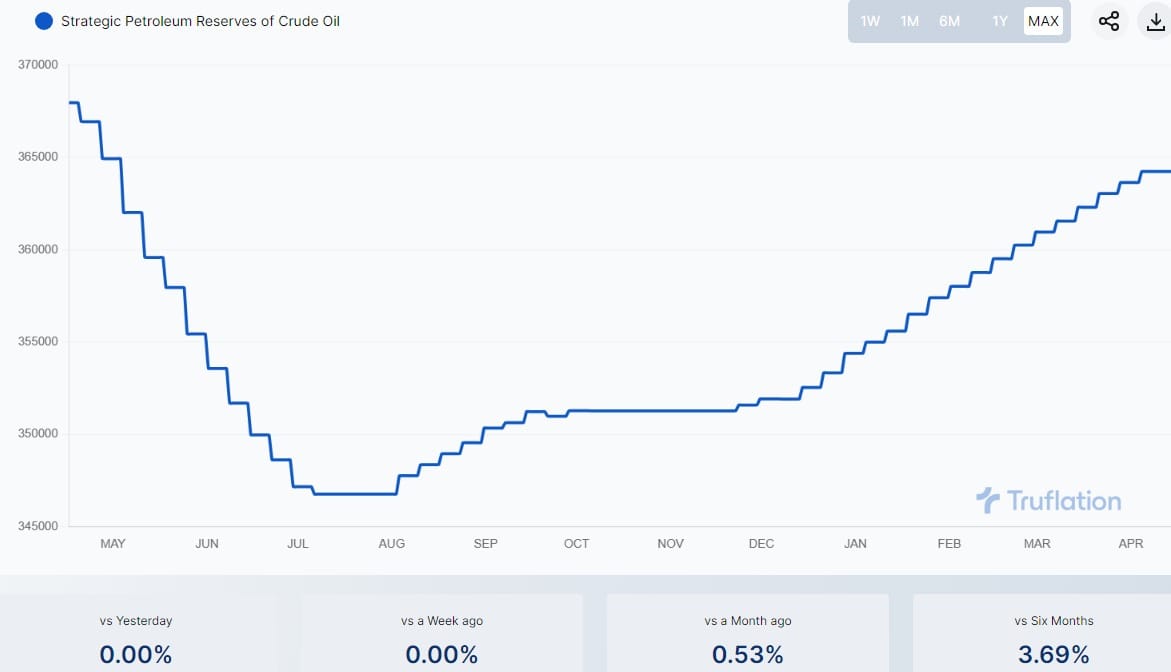
Israel Responds to Iran: War and Inflation in the 21st Century
Published 19 Apr, 2024
Armed conflict around the world is heating up at time of publication, most notably in this week's historic exchange of drones and missiles between Israel and Iran, compounding the ominous 2 year anniversary of Russia's invasion of Ukraine.
Putin's price hike was phrasing employed by the current Administration in Spring of 2022 to affix blame for then-rampant US inflation jumping to 8.5%. “What people don’t know," President Biden told an audience at the North Carolina Agricultural and Technical State University in Greensboro, "is that 70 percent of the increase in inflation was the consequence of Putin’s price hike because of the impact on oil prices. Seventy percent.”

Mr. Putin had, of course, just a few short months prior invaded Ukraine, a top-three world bread-basket. Enter butterfly effect, and, boom – it's nothing to do with US domestic policy but, in fact, Putin's price hike, you understand.
However, relationship between war and inflation in the 21st century has been complex, influenced by various factors including economic policies, technological advancements, geopolitical shifts, and the nature of armed conflicts themselves.
READ Truflation US CPI Dips Below Fed Target: Danger Ahead?
The War on Terror
Following the September 11, 2001 attacks, the United States launched the War on Terror, primarily targeting Afghanistan and Iraq. These conflicts resulted in substantial increases in military spending, contributing to inflationary pressures. However, the exact impact on inflation varied over time. For instance, between 2003 and 2005, the U.S. experienced a surge in inflation, with annual rates reaching as high as 3.8%. This uptick was partly attributed to increased defense spending. However, the Federal Reserve implemented measures to contain inflation, and by 2006, inflation had moderated to around 2%.
Syrian Civil War
The Syrian Civil War, which began in 2011, had devastating consequences for Syria's economy and caused ripple effects in neighboring countries. The conflict disrupted supply chains, leading to shortages of essential goods and driving inflation upwards. By 2013, Syria's inflation rate had soared to over 50%. Lebanon, a neighboring country hosting a large number of Syrian refugees, also experienced inflationary pressures, with inflation reaching around 5% in 2013.
Russian-Ukrainian Conflict
Prior to 2022, annexation of Crimea by Russia in 2014 and subsequent conflict in Eastern Ukraine resulted in economic turmoil in the region. Ukraine, in particular, experienced significant inflationary pressures. In 2015, Ukraine's inflation rate surged to over 40%, largely driven by currency depreciation and disruptions to trade. Russia, facing economic sanctions in response to its actions in Ukraine, also experienced inflationary pressures. In 2015, Russia's inflation rate peaked at around 15%, driven by a combination of factors including restricted access to international markets and a weakening ruble.

Impact on Oil Prices
Armed conflicts in oil-producing regions have often led to fluctuations in oil prices, which in turn impact global inflation. For example, the Iraq War in 2003 resulted in a sharp increase in oil prices, contributing to inflationary pressures worldwide. In contrast, periods of relative stability in oil-producing regions have seen oil prices stabilize or even decline, dampening inflationary pressures. For instance, in 2016, as conflict in some oil-producing regions eased, oil prices dropped, contributing to lower inflation rates globally.
Economic Stimulus and Inflation
During times of war, governments often implement economic stimulus measures to support defense efforts and boost economic activity. However, excessive government spending can fuel inflation. For example, in response to the COVID-19 pandemic, governments worldwide implemented massive stimulus packages, raising concerns about inflation. In the United States, the CARES Act and subsequent stimulus measures contributed to a temporary increase in inflation, with annual rates reaching around 4% in 2021.
The Middle East
Iraq War (2003-2011)
The Iraq War, initiated by the United States and its allies in 2003, had profound economic consequences for both Iraq and the broader Middle East region. The war led to a surge in oil prices, as Iraq is a major oil-producing country. This increase in oil prices contributed to inflationary pressures globally. In the United States, inflation rose moderately during the early years of the conflict, with annual rates reaching around 3% in 2005. However, the Federal Reserve implemented measures to contain inflation, and by 2006, inflation had moderated to around 2%.
READ Truflation: US Inflation Update March 2024
Yemeni Civil War (2014-present)
The ongoing civil war in Yemen has devastated the country's economy and led to widespread humanitarian suffering. The conflict has disrupted food and fuel supplies, driving up prices and exacerbating inflation. Inflation in Yemen surged to over 40% in 2018, reflecting the severe economic challenges facing the country. The impact of the Yemeni Civil War on global inflation has been relatively limited compared to other conflicts in the region, primarily due to Yemen's smaller role in global oil markets.
Impact on US Inflation
The Middle East conflicts have had varying impacts on inflation in the United States. The Iraq War, with its significant disruption to oil markets, contributed to higher inflation rates in the early 2000s. However, the Federal Reserve's monetary policy actions helped to mitigate these inflationary pressures over time. During the Syrian Civil War, the influx of refugees and disruptions to trade routes contributed to higher inflation in neighboring countries but had a relatively minor direct impact on US inflation. Similarly, while the Yemeni Civil War has led to severe economic challenges in Yemen, its impact on US inflation has been limited due to Yemen's smaller role in global trade and finance.
Economic Stimulus and Central Bank Policies
During times of conflict, central banks play a crucial role in managing inflation through monetary policy measures. In the United States, the Federal Reserve may adjust interest rates or implement quantitative easing to stabilize inflation and support economic growth. Additionally, governments may implement economic stimulus measures to mitigate the economic impact of conflicts. However, excessive government spending can fuel inflation if not carefully managed.
Get Exclusive Insights
with our Weekly Newsletter